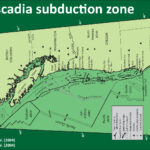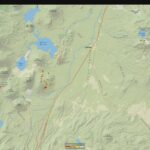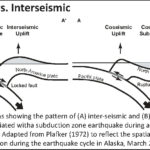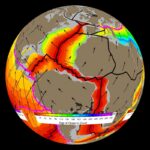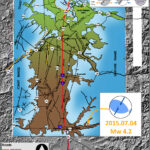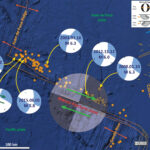Today (possibly tonight at about 9 PM) is the birthday of the last known Cascadia subduction zone (CSZ) earthquake. There is some evidence that there have been more recent CSZ earthquakes (e.g. late 19th century in southern OR / northern…
Earthquake Report: 2016 Summary Cascadia
Here I summarize the seismicity for Cascadia in 2016. I limit this summary to earthquakes with magnitude greater than or equal to M 4.0. I reported on all but five of these earthquakes. I put this together a couple weeks…
Toast, tsunamis, and the really big one | Chris Goldfinger | TEDxMtHood
Following an article in the New Yorker on July 20, 2015, the Cascadia subduction zone got more attention nationwide than it had ever seen previously. Most in the pacific northwest knew about Cascadia, but this article brought knowledge of the…
Earthquake mini-swarm near La Pine, OR!
Over the past day or so, there has been a swarm of seismicity in the La Pine area. La Pine is on the east side of the Cascade mountain range, a magmatic arc related to the Cascadia subduction zone. As…
Cascadia subduction zone: Tectonic Earthquakes of the Pacific Northwest
IRIS and the US Geological Survey have recently produced an educational video about tectonic earthquakes in the region of the US Pacific Northwest. The project was funded by the National Science Foundation. The Video YT link for the embedded video…
Plate Tectonics: 200 Ma
Gibbons and others (2015) have put together a suite of geologic data (e.g. ages of geologic units, fossils), plate motion data (geometry of plates and ocean ridge spreading rates), and plate tectonic data (initiation and cessation of subduction or collision,…
Springfield Earthquake!
It took me a couple days to catch up with things, so I missed posting about this earthquake until now. We had a Mw = 4.2 earthquake northeast of Eugene on the morning of 2015.07.04. Here is the USGS web…
Blanco Fracture Zone: 2000 – 2015 Seismicity Animation
I put together an animation that includes the seismicity from 1/1/2000 until 6/1/2015 for the region near the Blanco fracture zone, with earthquake magnitudes greater than or equal to M = 5.0. The map here shows all these epicenters, with…
Blanco fracture zone strikes again
The Blanco fracture zone (BFZ) is a transform plate boundary that connects the Juan de Fuca ridge with the Gorda rise spreading centers. This active fault zone consists of numerous right-lateral (dextral) faults. There is some debate as to how…

